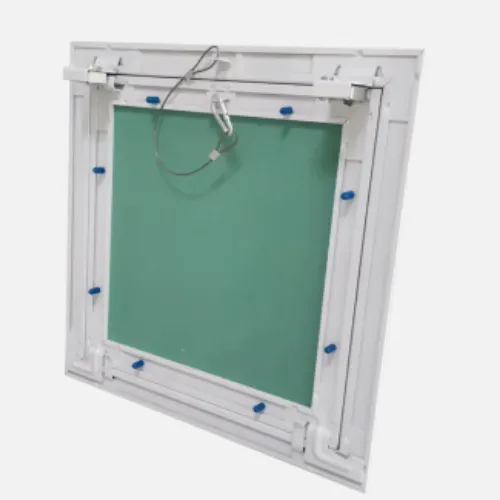8 月 . 30, 2024 04:05 Back to list
Comprehensive Guide to Ceiling Access Panel Sizes
Understanding Ceiling Access Panel Sizes
Ceiling access panels are essential components in construction and renovation projects, providing essential access for maintenance and inspection of utilities concealed above ceilings. These panels come in various sizes and designs, tailored to meet specific functionalities, aesthetics, and installation requirements. Understanding the standard sizes and their applications is key to selecting the right panel for your needs.
Common Sizes of Ceiling Access Panels
Ceiling access panels typically range in size from small to large, accommodating a variety of requirements. The most common sizes include
1. 12” x 12” - Ideal for access to small maintenance areas, such as electrical junction boxes or plumbing. 2. 16” x 16” - Offers a slightly larger opening, useful for a range of building systems. 3. 24” x 24” - This is one of the most popular sizes, sufficient for accessing larger systems and often used in residential and commercial buildings. 4. 24” x 36” and 24” x 48” - Frequently employed in commercial settings where larger equipment or multiple systems are present, providing easy access while ensuring minimal disruption to the ceiling structure.
Custom Sizes
While standard sizes cover many scenarios, custom-sized panels can be manufactured to meet unique specifications. Factors such as the layout of mechanical systems, aesthetic considerations, and the specific building codes of different regions can dictate the need for customized solutions.
Materials Used
ceiling access panel sizes

Ceiling access panels come in several materials, including metal, plastic, or drywall. Metal panels are typically more durable and can withstand higher traffic areas, while plastic panels are lightweight and resistant to corrosion. Drywall panels blend seamlessly into the ceiling but may require additional finishing work. Choosing the right material is as important as selecting the size to ensure functionality and longevity.
Installation Considerations
When selecting the size of a ceiling access panel, it’s crucial to consider not only the dimensions of the panel itself but also the installation environment. The panel should be positioned in a location that allows easy access without obstructing other systems or structural elements. Additionally, the surrounding ceiling material may require reinforcement to accommodate the panel, particularly for larger sizes.
Aesthetic Factor
The aesthetics of the ceiling must also be taken into account. Access panels should integrate with the overall design of the ceiling to maintain visual continuity. Some panels are designed to be painted, allowing them to match the ceiling color, thereby minimizing their visual impact.
Conclusion
Choosing the right size for a ceiling access panel is a fundamental aspect of planning any architectural or renovation project. By understanding the standard sizes available and considering the specific requirements of the space, you can ensure effective access to vital systems while also maintaining an aesthetically pleasing environment. Whether opting for standard or custom sizes, the goal remains the same a functional, durable, and visually integrated access solution that meets both practical and design needs.
-
Revolutionizing Interior Design with Ceilings t grid Suspended SystemNewsOct.29,2024
-
Revolutionizing Ceiling Design with ceiling access panel with Gypsum Tile WaterproofNewsOct.29,2024
-
Revolutionizing Interior Design with PVC Gypsum Ceiling: A Comprehensive GuideNewsOct.29,2024
-
Elevating Interior Design with High quality Mineral Fiber Ceiling TilesNewsOct.29,2024
-
Revolutionizing Interior Design with PVC Gypsum Ceiling: A Comprehensive GuideNewsOct.29,2024
-
Elevating Interior Design with High-Quality Mineral Fiber Ceiling Tiles: A Comprehensive GuideNewsOct.29,2024







